- Home
- Kōji Suzuki
Dark Water Page 20
Dark Water Read online
Page 20
The caves were only a three-hour drive from where Takehiko lived. He could have come whenever he wanted. Nor had he lacked specialist friends; he could have dived into the subterranean lake where his father had died whenever he chose.
Takehiko had intentionally kept putting the visit off. Hardly a day had passed during most of his life without him picturing that subterranean lake. It had even figured in his dreams. He had long lost count of the times he had woken in the middle of the night, gasping in panic at the water and darkness as they closed in on him.
At this time in his life, he faced no hardships worth mentioning. It occurred to him that the time had come.
Once summer vacation was over, he would have to cut down on activities with the Explorers’ Club, and devote himself instead to completing his undergraduate thesis and finding a job. The following year would see him a busy, gainfully employed member of society. He felt that his visit must happen now or never.
Takehiko had just turned three years old when his father’s body had been retrieved from the bottom of the subterranean lake. Children of that age do not even understand the meaning of death. That muscular, vital body he had hugged every day had been there one moment and gone the next; the only sensation he had had was that something familiar had suddenly vanished.
Six months after the two men encountered tragedy in the cave, a local exploration team had chanced upon the body of Sakakibara, the friend of Takehiko’s father. Immediately after the grisly discovery, the team had also discovered his father’s body while surveying the underground lake. Thus they had finally resolved the incident involving the two men who had gone missing about six months earlier. Even after the team had removed the boulder, Sakakibara’s decomposing body had remained dangling there. As the team turned their flashlights on Sakakibara’s corpse, they had been aghast to see the calcified back of his crushed skull cleaving as one to the limestone.
The police had explained to his mother that his father’s death was probably due to temporary derangement caused by being trapped so long in the darkness’.
What the police meant was that his father had become so mentally confused that he’d drowned himself in the lake. Cases of suicide by drowning are apparently not uncommon among desperate people marooned or adrift at sea for a prolonged period of time. Takehiko’s mother refused to accept the conclusion offered by the police, although there was no use in contesting it; it was a point of personal rather than criminal bearing. She did, however, doggedly insist that her husband had not been the kind of man to panic in a crisis. She understood her husband’s personality better than most.
* * *
The club had completed its preparations for diving in the cave by eleven the next morning. Takehiko and five other members would be the first to dive, while the other six members remained on standby. All team members, including the two female members, were certified scuba divers and had plenty of experience diving at sea. Only three members of the team, however, had cave-diving experience. It was the role of the captain, Takehiko, to initiate the remaining nine members into the mysteries of cave diving.
After a meticulous check to ensure that all equipment was working properly, the six divers lined up on the bank of the underground lake. Takehiko once again ran through the most important points to keep in mind:
‘Avoid using your fins as much as possible. If you disturb the sediment, you’ll end up with zero visibility. If you panic and try to surface, understand that there’s nowhere to surface. The only thing is to avoid panicking. Have you got that? Do not panic, whatever you do. Remain calm at all times. Approach any crisis with calm. Okay?’
Nodding in response, the other divers inserted the mouthpieces of their regulators into their mouths without a fuss. In addition to the lights fitted onto their helmets, all divers carried powerful searchlights. Each diver was tied to the lifeline at a uniform distance from the next diver. Their air cylinders were not fixed to their backs. They were to clasp their cylinders to their breasts if the need arose. The ability to move them this way prevented them from getting in the way in such a constricted environment.
The presence of the divers brought a distinctive aura to the cave as the beams from their twenty-odd lights reflected off the surface of the lake and illuminated the walls of the cavern. They were fitted out with so much equipment and so many lights that they literally dazzled. Takehiko’s father had been unadorned with such gear when he made his attempt on the tunnel. If he could see them now, he may well have smiled at the somewhat excessive array of equipment.
The prolonged rainy season had caused the subterranean water level to swell. Takehiko silently dived beneath the surface of the abundant waters of the lake, leading his fellow explorers on their way.
No sooner had he gone under than he became aware of the oval opening to a tunnel, about three feet across, in the left wall. He noticed countless little bubbles moving toward the opening and being drawn in. It had to be a tunnel that led to an outlet. In an attempt to relive his father’s experience, Takehiko held in his breath and let himself be directed by the current towards the tunnel, reminiscent as it was of the viscera of some enormous monster.
As he shone the beam of his underwater light in front of him, he could see that the stalactites hanging down from the ceiling made the passageway impracticably narrow. Although the current did provide enough thrust to keep moving him forward, he soon found himself colliding with the projecting limestone if he left everything to the momentum of the current. He discovered that it required considerable adeptness to avoid the projections just above his head and the stelae jutting out from the sides. He could only make his way forward by plowing frantically through the water with his hands, while vigorously moving his flippers up and down. Even with frontal visibility, it was almost impossible to move forward without colliding with the stalactites.
Takehiko lightly closed his eyes in an attempt to recreate what his father must have experienced. Yet no sooner did his eyelids shut than he had to open them again. The instant he closed his eyes, he was overcome by an intense fear as the power of his imagination transformed the stalactites into massive daggers. No matter how many times he tried closing his eyes, the sense of imminent danger forced them open again.
It occurred to Takehiko that it would have been impossible for his father to make it through the tunnel uninjured. He must have suffered innumerable lacerations to his head and arms. As Takehiko pictured his father tenaciously swimming onward in pitch darkness, unable to breathe and bleeding from his wounds, he was overwhelmed by a surge of emotion so intense that he used up all the oxygen in his lungs.
Just as he was about to give up hope of getting any further without breathing, the tunnel suddenly became wider, as if funnelling out. Looking up, he saw what appeared to be ripples on the surface of the water. A space seemed to have opened up between the ceiling of the tunnel and the water. Takehiko surfaced and took a breath of air through his mouthpiece. He was sure that his father would have also surfaced here to refill his lungs.
He pondered how he could possibly describe the majestic sight that greeted his eyes. From the gently curved ceiling hung down countless stalactites like so many straws. They descended to almost touch the top of his head, as sharp as a mass of downward-facing needles. The stalactites were up to several yards in length. Yet, sadly, Takehiko’s father had been unable to see this impressive spectacle.
A little further ahead, the tunnel once again narrowed to much the same constricting proportions as before. The gap of air between the ceiling and surface of the water disappeared. Takehiko decided to try holding his breath once again. The current began to slope slightly downwards, whereupon the flow of water became swifter. Yet he didn’t feel this merited much concern. In his excessive preoccupation with duplicating the conditions that had beset his father, Takehiko had forgotten to take due consideration for his own safety. There was a dramatic surge in the speed of the current, and, to his complete surprise, he found himself swallowed up in a wat
erfall. No more than ten feet tall, it was tiny as waterfalls go, tumbling him in the water only twice. Yet in the impact of rolling, he lost the searchlight he was holding in one hand and struck his back hard against a rock. Carried along by the current, he skidded jerkily along the tunnel. He could hold his breath no longer, and was on the verge of taking another breath when he saw a vertical line rise up about a dozen feet in front of him. Pressing his back up against the wall of the tunnel, he began to draw near to the line. As he drew closer, the true nature of the line became clear. It was a fissure in the rock, measuring about eight inches across. Water was gushing through this crevice and flowing out. This was the outlet! Through a layer of water particularly aerated with bubbles, he could clearly make out the faint light of day seeping through. Inside the fissure, the water on its way out mingled with the incoming light. With his back pressed against the rock by the surge of water, Takehiko thrust his hand into the strip of light from his contorted position. Through here it had been that his father had cast his last words.
A year after the news of his father’s death had reached the family, the film case containing a copy of the map had been delivered to the Sugiyamas. On the reverse side of the map were words that testified to his father’s final deed. It was a letter from his father, likely written immediately before he died.
There could be no doubt that water linked this underground lake with Tokyo Bay. The water flowed first into a tributary then into the thicker line of the River Tama, which emptied itself out into Tokyo Bay. Yet, what were the chances of a letter delivered this way arriving to the addressee? Surely it could only be described as a miracle. And yet, the sublime strip of light making its way through the aperture had the power to make one believe in just such a miracle.
They had found the letter in their mailbox. It had been delivered in the film case, although the package bore no sender’s name, thus making it impossible to determine who had found the letter or when it had been found. They could only imagine that it had been discovered by a resident of the Okutama area; else it had become entangled in the nets of a fisherman plying the stretch of sea near the mouth of the Tama. Whoever the finder, he or she had taken the note from the film case and read it, and appreciated the importance of the message to the family for whom it had been intended. He or she had also been kind enough to send it to the Sugiyamas.
The letter said:
Dear Takehiko,
Even when we know there is no way out, we sometimes have to press ahead in search of one, no matter how dim the prospects.
I know I can count on you to take good care of your mother and the child soon to be born.
With love,
Your father
Without a shadow of doubt, it was his father’s handwriting, every letter imprinted firmly. The letter was proof that his father had been prepared to meet his death.
It was clear why his father’s body had been found near the outlet below a subterranean lake. Knowing that there was no way out, his father had yet sought a way and tried the submerged tunnel; the attempt could end in failure, but at least he’d send his son a letter willing him a fearless determination to survive. He had not addressed the letter to his wife. He’d wanted to convey to his son – then too young even to read the letter -the message to be strong.
The letter had proved an invaluable source of strength to Takehiko. He’d read it over and over again. When life called for courage, he recalled his father’s words and the difficulties he’d tried so hard to overcome. Takehiko had had only two and a half years with his father and now hardly even remembered those days. Yet the darkness that his father had faced pursued Takehiko into his dreams, making him gasp for air. Every time he awoke from the dream, he felt only more determined to be strong. Because he had the letter, there was nothing he feared in life.
He thrust his arm into the crevice up to the shoulder, and slowly pulled it back. If the opening had only been twice as wide, his father’s wish would have been granted; he’d have emerged into the radiant light.
Takehiko strove to imprint the sight before him in his memory, so he’d never forget. And he said in his heart, ‘Dad, I got your will.’
EPILOGUE
In the old days, Cape Kannon used to be called Cape Hotoke, or Cape Buddha. Although almost seventy-two, Kayo had never heard the cape called by the older name.
In the dawn of an early spring morning, Kayo briskly walked the route she always took on her strolls. The Buddhist goddess of mercy, Kannon, was supposed to extend the hand of salvation to all who called upon her. Kayo believed in Kannon, and had made it a rule to come this way on her morning stroll for the past twenty years.
Whether ‘Kannon’ or ‘Hotoke’, the name of the cape had welcome associations. If nothing else, the name revealed that the cape was a place marked by history. In fact, the walk along the promenade revealed among the bushes what were either jizo roadside statues or tombstones. The things were no doubt originally placed there to appease the souls of the dead who’d been washed ashore on the promontory, but none of the local residents had any idea how or why the artefacts had been installed. In any case, there were surprisingly many of them on and around the cape.
It was not yet fully light as Kayo made her way along the path skirting the sea. In a slightly stooped posture, she walked with her eyes cast down. Once the spring holidays arrived, her granddaughter Yuko would come and visit her, and Kayo would be able to take her granddaughter along on her walks. A walk, she felt, was always a little bit more worthwhile with someone by your side.
Her spectacles steamed up with her own breath; Kayo slowed down and looked at the pedometer fastened to her waist. It was hardly necessary for her to check. She could usually guess how many paces she’d walked and was never off by more than a few paces either way. This kind of accuracy was to be expected. After all, she’d been in the habit of walking this route almost every day for the past twenty years.
Coming to a halt in front of a cave of crumbling rock, she looked at her pedometer, which showed exactly two thousand paces. This meant that she had covered roughly a mile since leaving her home in Kamoi. Stretching her back, she walked toward the sea, bringing her two hands together in prayer as she faced the rising sun. The words of her prayer had not changed much over the past two decades. She prayed for the health of her two sons, the one who lived in Tokyo and the one who lived in Hokkaido, and for their families. Now and then, whenever the need arose, she prayed for something she wanted, but never more than one thing. She’d never pray for too much. Kayo believed that if you stood on the tip of Cape Kannon and prayed to the rising sun, all your wishes came true. She’d been petitioning the sun less than two months when her son called to triumphantly announce that he’d been promoted to section supervisor, at an early age.
‘It’s thanks to the goddess Kannon,’ Kayo told him.
‘Ha! I think it was thanks to my being very good at what I do,’ her son replied, laughing.
Originally taken up as a form of rehabilitation, her early morning walks were now undertaken purely for the well-being of her family.
It was now twenty years since Kayo had collapsed on a street corner in Yokosuka. At the time, she had been in her fifties. An ambulance had taken her to hospital, where she had been diagnosed as having suffered a subarachnoid haemorrhage. Her condition required immediate surgery. As luck would have it, the operation was successful, but left her with the temporary inability to walk properly. For several months after leaving the hospital, she had to lean on her husband’s shoulder to walk. She had now recovered to an extent that it was no longer immediately noticeable that she dragged her left foot. At one point her spirits sank very low when she thought that, for the remaining years of her life, there would never be a time when she wouldn’t have to limp. Yet her success in overcoming the impediment had boosted her confidence so much that she felt she’d gained a new lease on life. She felt more truly alive after the operation than before. As Kayo would have it, this too was a blessing from
the goddess Kannon.
While Kannon may have had a hand in Kayo’s robust recovery, there was one more reason for her renewed vigour. It began as a strip of light that had caught her eye. She could see it even now, for the scene had imprinted itself on her retina. The strip of light emanating from a tidal pool on the beach had been one of the main reasons why she’d become so particular about taking her walks every morning like clockwork. It had happened almost twenty years before, about six months after she was released from the hospital.
Although the doctor had urged Kayo to walk as a way to get better, she considered it such a chore that she kept putting it off. At length, the doctor had told her that she would become bed-ridden if she did not change her attitude. The words shook her into action, and one morning she decided to go for a stroll.
Dragging her bad leg heavily behind her, she nonetheless managed to walk as far as the tip of the cape. As she paused to catch her breath, she leaned over the promenade railings. She was utterly exhausted after having struggled all the way, forcing her left leg to come forward with the rest of her body. Ever since leaving the hospital, she had been distressed by her body’s constant refusal to cooperate with her intentions. She found her disability all the more irksome for once having been such an active person. Huffing and puffing, she sat atop the railings and took a wad of tissue paper from her pocket. After wiping her nose and eyes, she put the tissue paper back into her pocket, seemingly unwilling to throw the used paper away. She had repeatedly used the same wad of tissue in the same way during her walk. The railings gave way to a patch of rocky coast. The waves were breaking at her feet, and when the wind suddenly changed direction, it blew drops of spray onto her cheeks. Directly beneath the railings sprouted tufts of purplish grass. From each short, thick stem flourished a number of sprouts, giving the plant an air of great vitality. The onset of May would see the tips of these sprouts bursting forth in clusters of pale flowers. Yet it was still too early in the year for that. The plant was a species of angelica, known in Japanese as ashitaba. Kayo knew the name of the plant as well as its origin. Rendered in Chinese characters, ashitaba meant ‘tomorrow-leaf’. Indeed, this plant was named so because if its leaves were picked off today, they would sprout again by tomorrow. As she looked down at the Japanese angelica and pondered how it bore witness to the life force, she felt the urge to bend down and pluck off a leaf or two. She did so not out of some destructive impulse but out of the desire that the plant might share with her some of the life force that flowed within it.

 Death and the Flower
Death and the Flower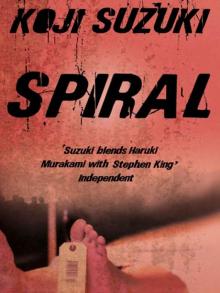 Spiral
Spiral Loop
Loop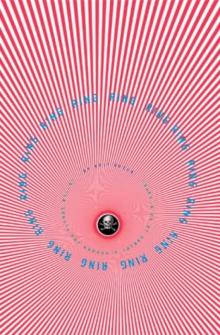 Ring
Ring S
S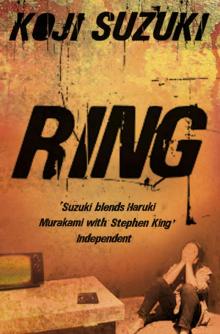 The Complete Ring Trilogy: Ring, Spiral, Loop
The Complete Ring Trilogy: Ring, Spiral, Loop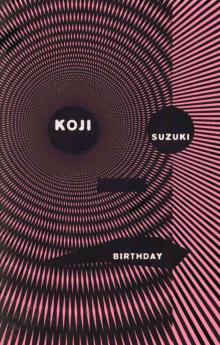 Birthday
Birthday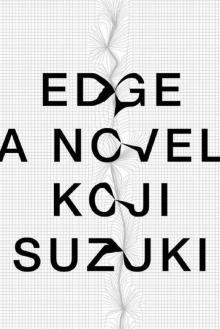 Edge
Edge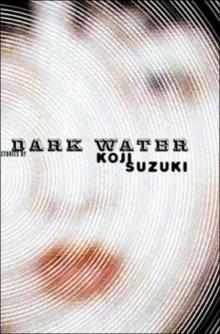 Dark Water
Dark Water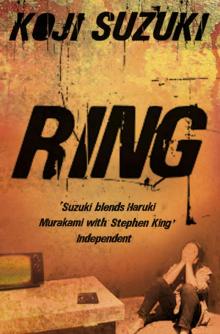 The Complete Ring Trilogy
The Complete Ring Trilogy